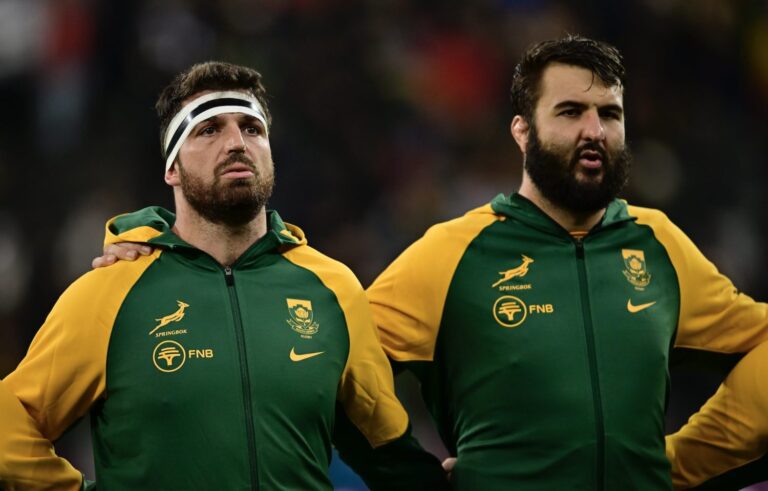
That’s it, the top 100 players in men’s rugby have now been revealed. These lists will always generate controversy, but I broadly agree with the guys at the top. Today, we’re not going to dissect the minutiae of the list, instead we’re going to answer a more fundamental question – why do the best players come from the best teams?
This might sound obvious. The best teams are simply a collection of the best individuals and they’re the best teams because they have the best individuals. It’s a circular argument whichever way you look at it. These lists will always be overpopulated by members of the best teams. In this list, the top four ranked nations (South Africa, New Zealand, Ireland, and France) account for 56 (and therefore 56%) of the players. Teams outside the top ten have just four representatives, three from Wales and one from Georgia. So how about this as a question, are there great players outside of the elite teams but they are brought down by sub-par teammates or are those sub-par teams devoid of elite players?

At first, this seems an impossible question to answer. Rugby is a team sport and there is almost no area where you aren’t interacting with teammates – kicking at goal or to touch from penalties perhaps being the single exception. A hooker with unerring throwing accuracy can be let down if he’s throwing to poor jumpers or lifters. It’s tempting to throw your hands in the air and declare that it’s impossible to separate the skill of a player from the skill of the players surrounding them. But let’s not give up yet.
Wingers are probably the easiest group to experiment with because they have a simple task in attack; score tries. This season, Immanuel Feyi-Waboso (ranked 20th in the list) has scored five tries in his six Premiership games, a feat unmatched by any Bath players, a team who rank first in the Premiership. The implication here is that Feyi-Waboso is so good that he can overcome the weakness of Exeter Chiefs, who are last in the Premiership. Another player who has had a strong season so far is Salesi Rayasi of Vannes, scorer of four tries in nine matches for a side ranked last in the Top14.
Rayasi and Feyi-Waboso share something else in common, of the 21 players so far this season who have scored four or more tries in the Top14, Premiership, or URC, they rank in the top four by defenders beaten per clean breaks.
Both Rayasi and Feyi-Waboso share something else in common, of the 21 players so far this season who have scored four or more tries in the Top14, Premiership, or URC, they rank in the top four by defenders beaten per clean breaks. This means that in order to break through the opposition defence, they need to do more work. According to Oval Insights data, Feyi-Waboso needs to beat two defenders and Rayasi has to beat 2.3. Both are more than 30% higher than the average. Plus, you can see this play out at a team level where there is a correlation between points scored and the number of defenders beaten per clean break.
If you are struggling to follow, don’t worry. All this means is that better teams create more clear cut chances than weaker teams. When the ball comes out to the wings, players like Feyi-Waboso or Tom Roebuck of Sale Sharks, who also ranks in the top four, have to do more work to generate a clean break. Some have obviously proven adept at overcoming this and still scoring the tries but the stats suggest those same players would score more tries at a better team where more of the work was done for them by the time they got the ball. The correlation exists all over the pitch, not just the wingers. Powerful forwards would carry for a higher average number of metres if they were surrounded by teammates creating quicker ball or pulled away defenders thanks to their own carrying threat. Fly-halves would find more holes in defences to either pass or kick into if the rest of their teammates were doing a better job of stretching the defenders.

This is useful to know. If you are a team then you can find undervalued players by looking for players who are performing even though they have to do it the hard way. Someone like Guy Pepper has already equalled his Falcons try tally and is about to surpass the value total of his carries in seven Bath matches. Joe Batley has done the same since he joined Bristol Bears from the now defunct Worcester Warriors. While your competitors zag to the high-performers playing for successful teams, you can pick-up undiscovered gems by zigging to the strugglers. But it also matters for our own perception of individual quality. Take any of the players listed in the top 20 and put them in the Uruguayan squad and they will stand out. They will look really good, and not just because the kit is great. But, forget about them for a few years and when we redo this list there might only be a couple who even make the top 100.
When you see a player who looks exceptional for their emerging nation, just realise that they would be extraordinary if they were surrounded by better teammates. And maybe, they should be filling a few more places in our top 100 than they do today.





